Director: Jesse V. Johnson
Writer: Jesse V. Johnson
Cast: Scott Adkins, Marko Zaror, Cung Le, JuJu Chan, Vladimir Kulich, Keith David, Charles Fathy, Matthew Marsden, Sheena Chou, Luke Massy, Aki Aleong
Runnning Time: 94 min.
By Paul Bramhall
The transition from stuntman to director should, by nature, not be an easy one. However recently guys like Chad Stahelski and David Leitch, the pair of stuntmen turned directors behind John Wick, have been making it seem like a walk in the park. One name who many may not be familiar with though, but has been treading the path of being a stuntman, writer, and director for close to 20 years, is Jesse V. Johnson. The talent that Johnson has worked with over the last 10 years is enough to make any Expendables casting agent envious, with the likes of Mark Dacascos, Don ‘The Dragon’ Wilson, Dolph Lundgren, Darren Shahlavi, Jerry Trimble, and Eric Roberts all featuring in his movies. Despite the names he’s able to attract though, Johnson’s directorial efforts have remained an example of how difficult such a transition is, with movies like The Last Sentinel and Alien Agent largely considered a waste of the talents involved.
In 2017 though Johnson seems to have found a new muse in the form of Scott Adkins. While Adkins forged a hugely successful working relationship with director Isaac Florentine, which saw them work on 7 movies together between 2003 – 2015, in 2017 alone the new pair have already collaborated together on 3 titles. The first one to hit screens is Savage Dog, and at the time of writing Triple Threat and Accident Man are soon to follow. Interestingly Savage Dog is not the first time Johnson and Adkins have worked together, with Adkins playing a small part as a fighter in the movie that brought Johnson to people’s attention, with 2005’s Pit Fighter. Here though he’s no longer a bit player, with a starring role alongside fellow martial arts luminaries Marko Zaror, Cung Le, and Juju Chan.
Savage Dog earns points immediately for taking the chance to set an action movie in a period that’s never really been used before within the genre. Taking place in Indochina in 1959, despite the low budget there’s a nice level of period detail on display that gives the visuals an authentic feel. Adkins plays an Irish prisoner being held by a well off Nazi (played by Vladimir Kulich) and his cronies, which include a sharp suited Marko Zaror, and military man Cung Le. They run an illegal fighting tournament, however when the British government come looking for Adkins to extradite him, Kulich decides to set him free so as not to bring any unnecessary trouble. Adkins doesn’t enjoy his freedom for long though, as Kulich and his crew soon set their sights on acquiring a bar he’s taken a job at. The bar is run by Keith David (yes, Childs from The Thing) and Juju Chan, and the acquisition leads to tragic consequences that see budding lovers Adkins and Chan left for dead.
While the plot of Savage Dog has plenty of potential for intrigue, mystery, and even romance, with his 10th feature length production Johnson unfortunately still hasn’t learnt anything about building up dramatic tension. Important plot points that should have a huge bearing on the events that unfold, such as Juju Chan being revealed to be the daughter of the Nazi, are delivered in a frustratingly clunky manner with zero tension. The whole movie is also distractingly narrated by Keith David, being told in retrospect from beyond the grave of all places, when the plot would have benefitted more from allowing the visuals and actors to tell the story. Instead, the narration frequently delves into pretentiousness, ranging from stating the obvious (when Adkins sneaks into an enemy base, David tells us he’s sneaking in because it’s better than walking in the front door), to channelling Richard Crenna’s colonel from the Rambo movies.
The direction remains painfully pedestrian during this setup, often teetering into boredom, and is only broken up by sub-par 90’s Van Damme style fight scenes, that see Adkins being coerced into bare knuckle matches for Kulich and co.’s entertainment. Much like in Hard Target 2, the fighters Adkins goes up against in these matches are the real deal, from kickboxing champions like Dennis Keiffer, to Muay Thai fighters like Kaden Vu, however the fights themselves lack any kind of thrill factor to pull the audience in. The over reliance on slow motion also detracts from the impact, and again reflects a painfully 90’s aesthetic towards the action, reflecting an era when it was acceptable to have every flying kick take place in slow motion. In 2017 though, we’ve seen it too many times before.
After such a rocky start, at precisely half way through, the tone takes a surprising 180 degree turn, and having been left for dead, Adkins rises up to seek his revenge with an angry looking beard. After 45 minutes of Hallmark TV movie of the week styled plotting, the last 45 minutes of Savage Dog become an ultra-violent blood soaked revenge flick, which almost makes most of what came before seem like another movie. From the moment Adkins strolls up to the bar he used to work at, and proceeds to hack the head off of the guard on the door with a machete, you know that a certain something just got real. For the remainder of the runtime Savage Dog doesn’t let up, as Adkins becomes a one-man army with a machete, shotgun, and a string of grenades for company. For fans that wanted another Rambo movie, this should be the place to check in.
The second half of Savage Dog is a joy to behold, and sees Adkins go on his most entertainingly violent one-man rampage since the finale of Universal Soldier: Day of Reckoning. The brutality (or should that be ‘savageness’?) of it is fantastic fun to watch, admittedly perhaps enhanced due to the dullness of the first half, however when you have Adkins shooting people point blank in the face with a shotgun, and hacking off limbs left, right, and center, what’s not to enjoy? Adkins is in his element here, because as much as I find him a decent actor (his Irish accent is on the money), like a 90’s era Donnie Yen I find him most enjoyable when he’s in angry mode. That’s what makes Ninja: Shadow of a Tear such a masterpiece, as he’s basically angry for 95% of the runtime, but thankfully in Savage Dog 50% is equally as entertaining.
Frequent Johnson collaborator Luke LaFontaine is on fight choreography duty, a veteran stuntman who also choreographed Johnson’s The Last Sentinel and Alien Agent, and in the latter half of Savage Dog he restrains Adkins in the fight department to great effect. Instead we’re treated to a barrage of Commando level gunplay, with Adkins having countless pistol wielding legionnaires dispatched against him, as well as a pair of semi-mounted machine guns. Savage Dog may well hold the record for the number of bullets that can be fired at someone without them getting hit, but far from being a detriment, the excessive nature of it all means it’s never anything less than entertaining to watch. Such a setup also means that, when he suddenly finds himself alone in a room with Cung Le, the fight that follows has the desired impact.
Indeed for the lack of understanding that Johnson has when handling dramatic material, what can’t be argued is that he knows his stuff when it comes to constructing an action scene, including how to work a level of tension into it. The prospect of an Adkins vs. Le showdown isn’t wasted, and the pair go furiously at it for a couple of minutes, that sees plenty of collateral damage and some nice falls. Hardcore martial arts fans may take issue with the way the fight ends, however it fits within the context that it’s taking place in, and for those that were waiting to see Adkins let loose, it doesn’t disappoint. However Savage Dog also holds another treat for action fans, and that’s the promise of a rematch of the finale from Undisputed III: Redemption, with Adkins facing off against Marko Zaror outside of the ring this time.
Personally this rematch was one of the elements I was most looking forward to in Savage Dog, while as much as I enjoyed their fight in Undisputed III: Redemption, I confess to not being a fan of ring-set tournament fight flicks. So to see them facing off in a setting such as the one Savage Dog provides was a thrilling prospect. Thankfully the promise delivers, and while the fight is neither as stylistic nor lengthy as their last encounter, there should be little to leave fans unhappy. Beginning with a blade wielding Zaror squaring off against a spanner wielding Adkins, the fight eventually segues into a raw empty handed slug fest, with Adkins finishing things off in a way that takes a leaf, or more specifically, a bite out of Leung Kar Yan’s performance in Thundering Mantis.
While Savage Dog has plenty of negatives against it, and will likely remain unseen by anyone who’s not a fan of either Scott Adkins or Marko Zaror, it does eventually find its way, and once there never deviates from it. Bearing this in mind, and considering its budget, from such a perspective it’s an admirable effort. It’s baffling that an action talent like Juju Chan was cast in a non-action role, and considering what she’s capable of, it would have been nice to see her be something more than just a damsel in distress. If Johnson can just crack how to effectively direct the dramatic material as well as he directs the action, there’s little doubt that Savage Dog would have been an action masterpiece. As it is, the first Johnson and Adkins collaboration remains a rewarding experience for those that stick with it, so for now, here’s hoping both Triple Threat and Accident Man bring us half the fun Savage Dog delivers, but for the whole of their runtime.
Paul Bramhall’s Rating: 7/10





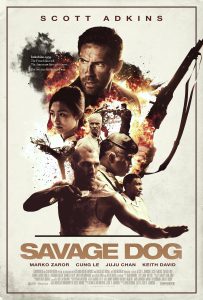





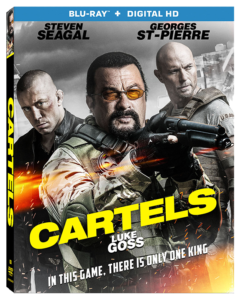


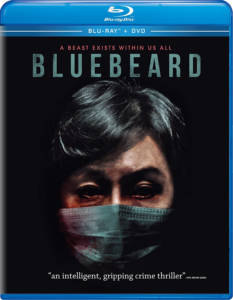

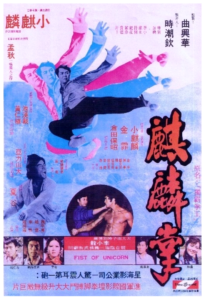
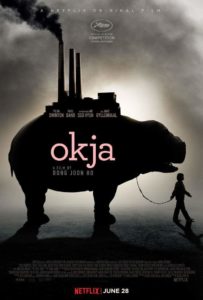
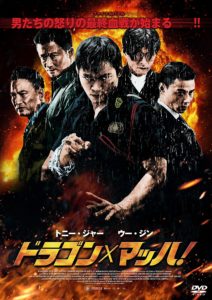




16 Comments